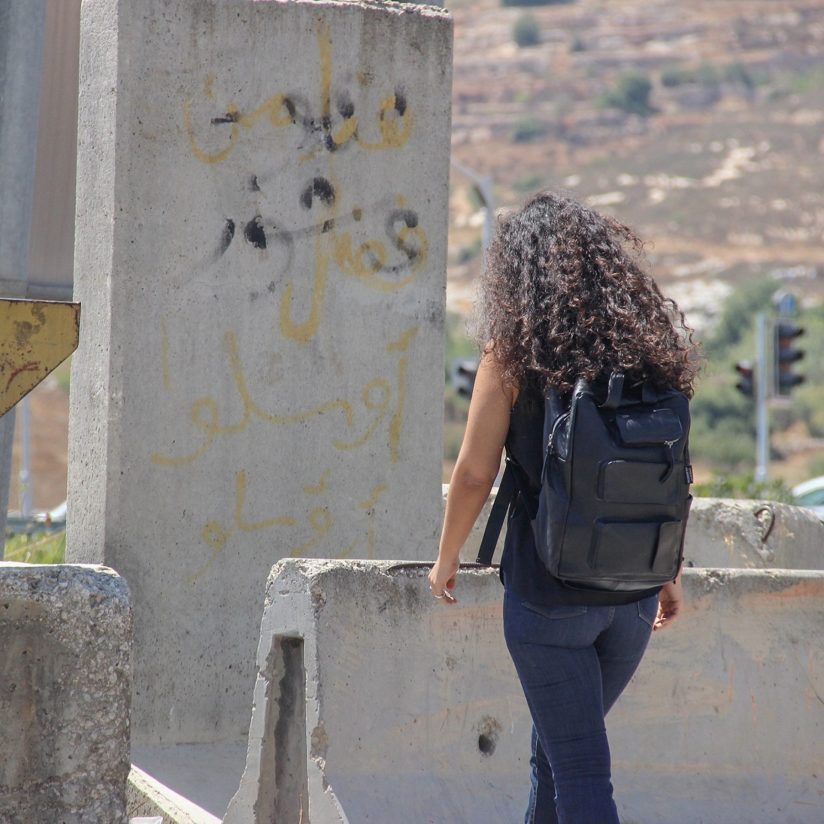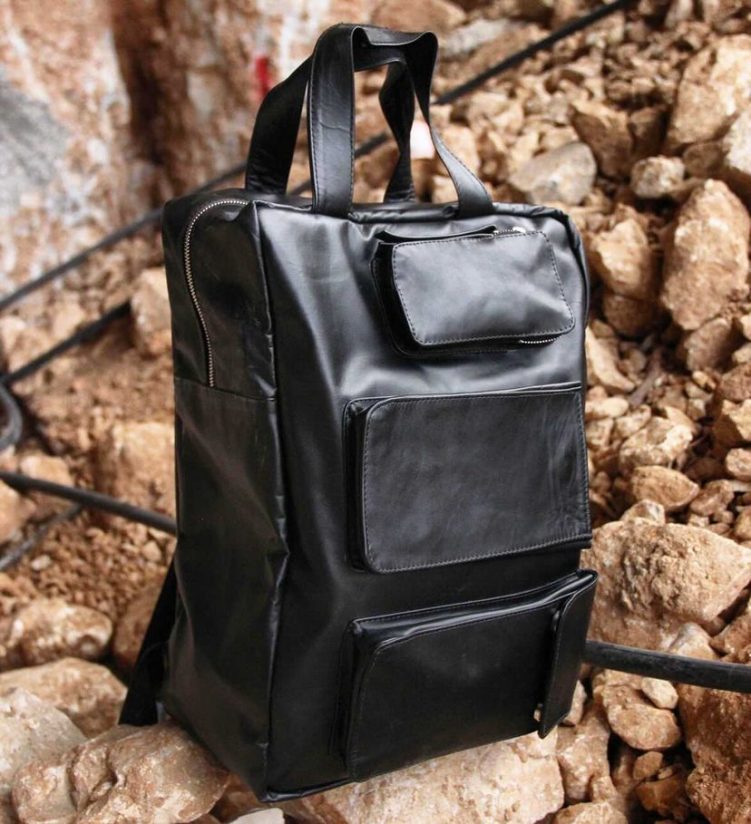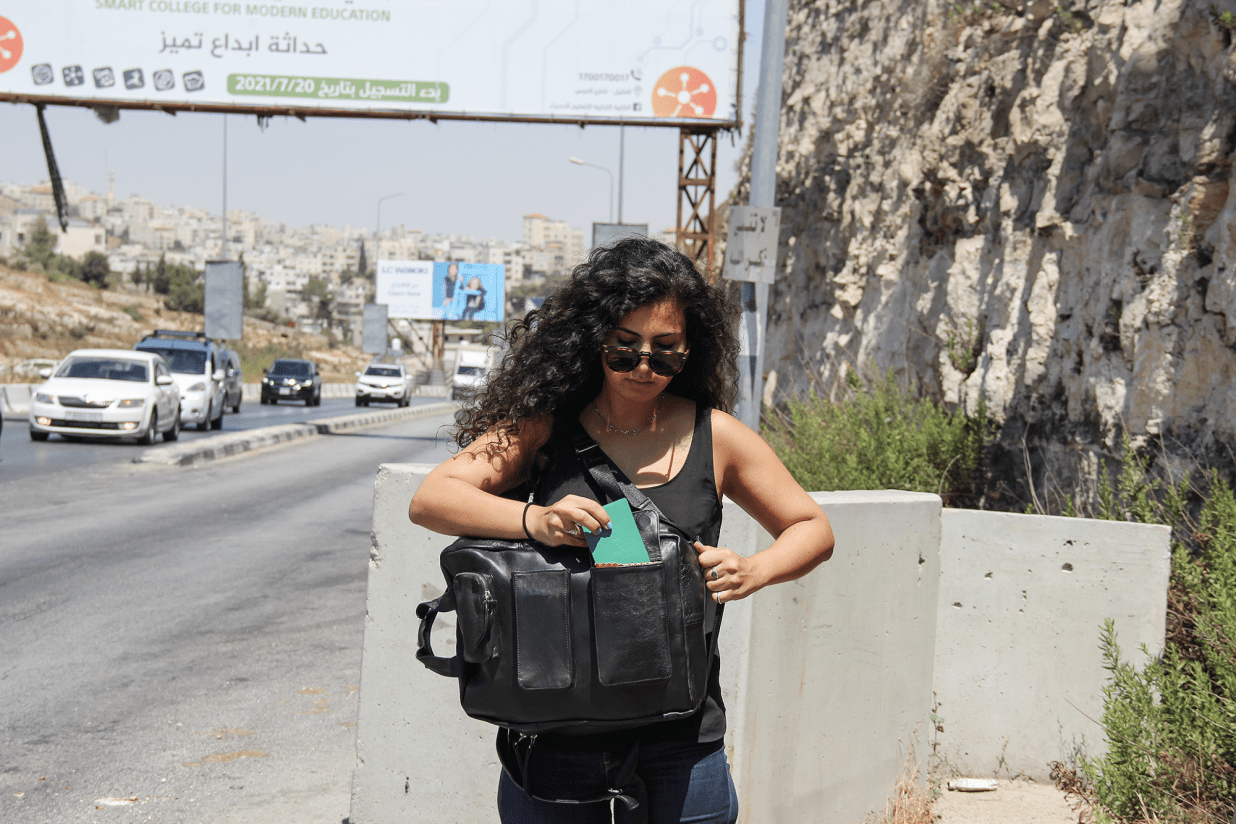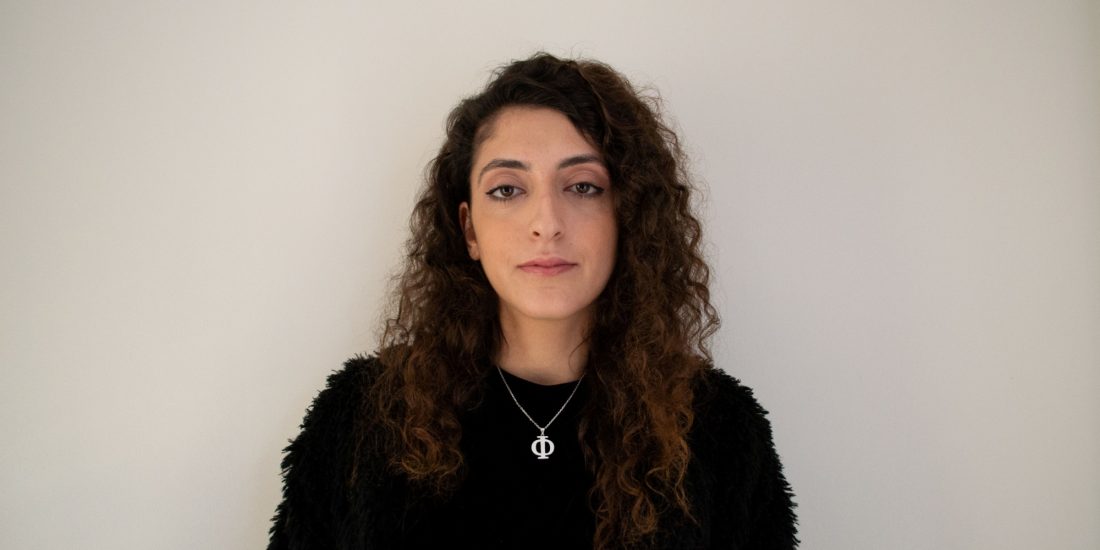A Bag with Baggage
Architect/Designer Areej Ashhab wants her designs to offer solutions to problems that exist in everyday life in Palestine and to tell stories of experiences in the Occupied Land. She has designed and created The Black Sac, an unassuming backpack, completely handmade in Palestine, that empowers the carrier, as they reflect on a life that is strife with challenges and checkpoints. By Sindhu Nair
Going by first impressions, the Black Sac is an unassuming, user-friendly bag with multiple pockets and openings, a result of thought and research behind the need it has to serve. But on further exploration, The Black Sac, is so much more…
It is a bag that tells the story of life in Palestine: the difficulties of the daily commute, of moving through multiple checkpoints in a day, it is the story of the struggle for freedom of movement in constricted West Bank area. And finally, it is a bag with a lot of baggage and has space for more.
“The design does not surrender to the reality of the Occupation rather it empowers the carrier, for the bag carries with it an understanding of the lives of Palestinians on a daily basis,” says Areej Ashhab, the endearing architect/designer behind the label who wants the bag to be free from the humiliating experience of moving through Palestine by creating a playful product that is a design solution to multiple travellers around the world in its new international avatar.
The main goal of the design is storytelling, emphasises the designer. She says, “In the end we want the checkpoints to be removed and design is used here to emphasise the need of the hour.”
 Areej Ashhab is an architect who graduated two years ago, currently residing in Jerusalem and soon moving to London to begin her Master’s programme in Forensic Architecture. She designed this bag with a group of designers when she participated in a workshop in 2015, for Disarming Design, a temporary programme of Sandberg Instituut in Holland that encourages designs made in Palestine and are committed to design practices that deal with conditions of conflict, oppressive forces and entangled histories. Designers from Sandberg Instituut in Holland join hands with designers in Palestine to come up with designs that narrate the daily lives of people in Palestine, the culture and history of the country.
Areej Ashhab is an architect who graduated two years ago, currently residing in Jerusalem and soon moving to London to begin her Master’s programme in Forensic Architecture. She designed this bag with a group of designers when she participated in a workshop in 2015, for Disarming Design, a temporary programme of Sandberg Instituut in Holland that encourages designs made in Palestine and are committed to design practices that deal with conditions of conflict, oppressive forces and entangled histories. Designers from Sandberg Instituut in Holland join hands with designers in Palestine to come up with designs that narrate the daily lives of people in Palestine, the culture and history of the country.
The Checkpoint bag, as the Black Sac was known then, was conceptualised by Ashhab on one such workshop. It was born out of reflection on the disproportionate and oppressive dimension that checkpoints take up in the daily life of Palestinians throughout West Bank.
It is noted in the Disarming Design website, that “The designers couldn’t shake off the humiliating experience of the Qalandia checkpoint”. But as the Checkpoint Bag is rebranded as the Black Sac, it wants to shake off these images and be a thing of joy, of a design that is born of experiences that don’t reduce the product to be a thing of desolation rather celebrates it for the stories it holds.
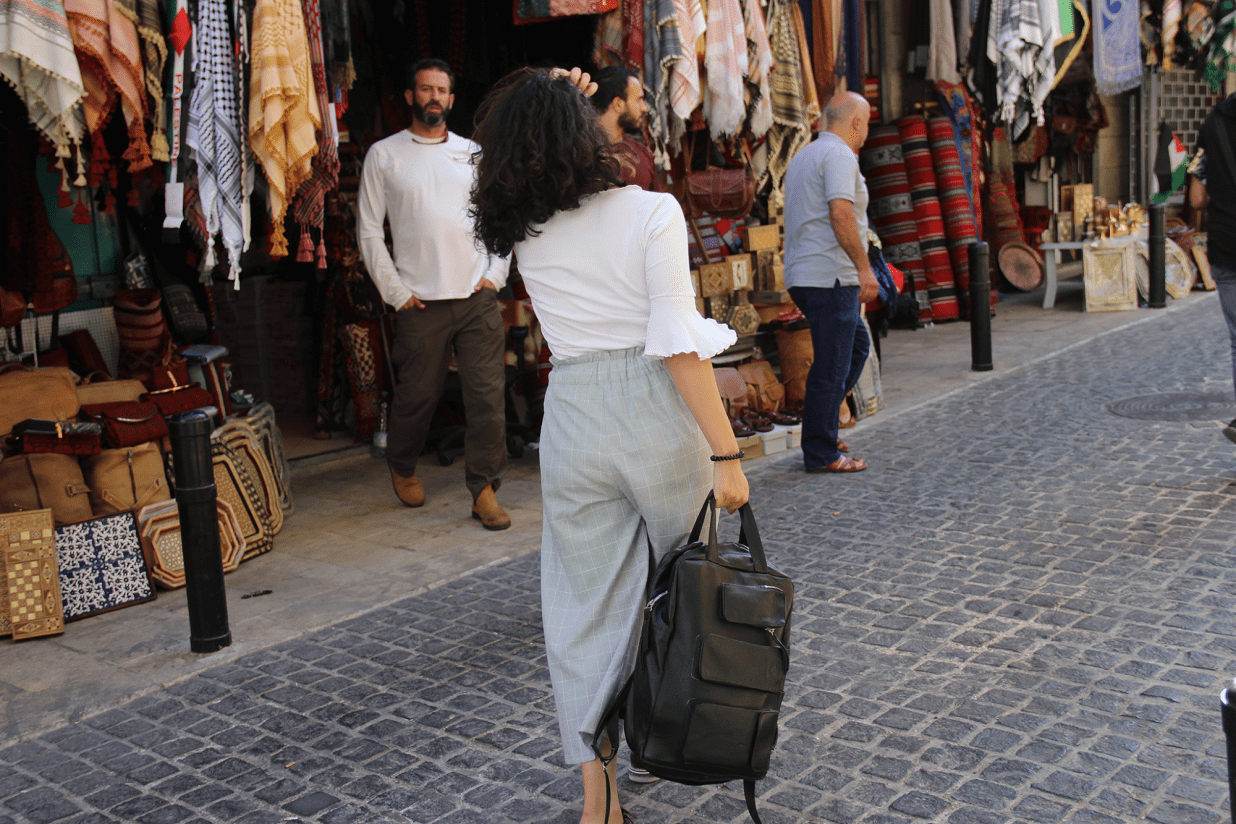 Ashhab explains why The Black Sac is unique in its design: “The bag is waterproof, made with quality leather sourced from Palestine. It has multi-purpose pockets; three pockets in the front, a laptop, and the main pocket for diaries and other paraphernalia. The idea was that each pocket has a purpose. The smaller ones in the front is for wallets, for belts. It integrates different carrying possibilities in its design with two handles to swiftly turn the bag and access external pockets s you move from the checkpoints, for ease of usage. I added this pocket outside for laptops and all the pockets are one side for ease of use,” she says.
Ashhab explains why The Black Sac is unique in its design: “The bag is waterproof, made with quality leather sourced from Palestine. It has multi-purpose pockets; three pockets in the front, a laptop, and the main pocket for diaries and other paraphernalia. The idea was that each pocket has a purpose. The smaller ones in the front is for wallets, for belts. It integrates different carrying possibilities in its design with two handles to swiftly turn the bag and access external pockets s you move from the checkpoints, for ease of usage. I added this pocket outside for laptops and all the pockets are one side for ease of use,” she says.
“As per the original design, for a symbolic gesture and to make a statement, we added a metallic key that symbolises “right of return” keys (haqq al-awda) significant for Palestinians as most of them still keep the keys of their lost homes with them in the hope of returning back to it, someday. This symbolic key-shaped piece was inserted in one of the small inner pockets so that it is seen through the X-ray machines by Israeli soldiers,” says Ashhab.
But this feature is no longer available in the bag, as Ashhab wants to disassociate the pain of occupation with the product at hand and make it available for wider usage and also to reduce the gross making cost of the bag. “I don’t want to add anything that is gimmicky in my design. I only want designs that make sense,” she says.
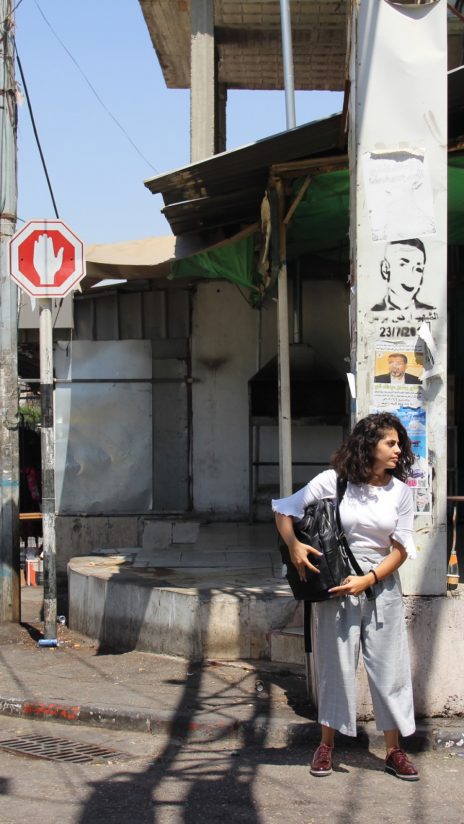 “My hope is to create new designs that are inspired by the struggles in Palestine that relate to the experience of moving around concrete blocks and checkpoints but in a joyful, playful manner. I want my designs to be dynamic and easy to use. This is not to give up, or to forget what is happening here due to occupation but to give new meaning to our experiences,” she says.
“My hope is to create new designs that are inspired by the struggles in Palestine that relate to the experience of moving around concrete blocks and checkpoints but in a joyful, playful manner. I want my designs to be dynamic and easy to use. This is not to give up, or to forget what is happening here due to occupation but to give new meaning to our experiences,” she says.
While Ashhab designed a bag to make the journey of crossing Israeli checkpoints easier, she hasn’t fallen prey to loud marketing gimmicks or symbols on the bag to bring attention to the difficult life in Palestine.
“We manufacture the bags in Hebron in a small workshop using the skills of local leather artisans and it is completely handmade with leather sourced from Palestine,” explains Ashhab about the making process.
Ashhab is still reeling from the success of the bags, after its rebirth as the Black Sac, and has been inundated with requests for the bags from around the world, from the Gulf countries and from the US and from its country of origin. “I am now putting the bag up for selling in different marketplaces, and it will be available for international shopping as well,” she says, “I will be exploring options of crowdfunding, etc as the cost of production is quite high and my family is chipping in to help me with the process, now.”
Ashhab has made The Black Sac open for international shopping with a cost price of $185 dollars and you can shop them here, https://theblacksac.myshopify.com/products/theblacksac

